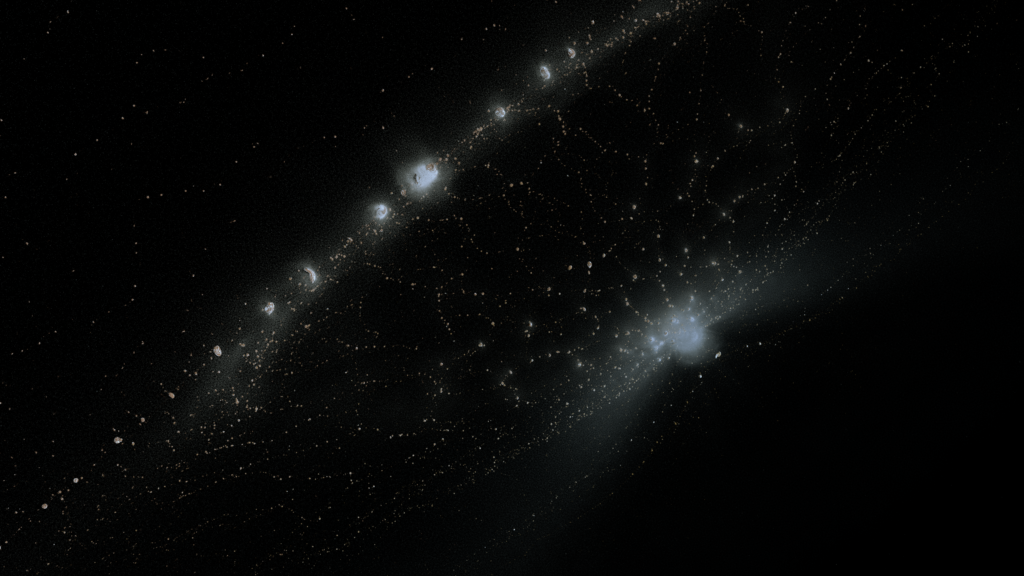The results of simulation on a supercomputer helped astronomers uncover the mystery of the origin of Saturn’s rings. They were formed as a result of a powerful collision that occurred at a time when dinosaurs still roamed the Earth.
Mystery of Saturn’s Rings
All the giant planets of the Solar System have rings. However, the rings of Saturn are much larger, more massive and brighter than the ring systems of Jupiter, Uranus and Neptune. In addition, they differ in their composition. While the rings of other planets are mostly made up of dust and rock particles, Saturn’s rings are almost entirely made up of water ice, which causes their brightness.

For a long time, most astronomers believed that Saturn’s rings formed simultaneously with the planet. Everything was changed by the Cassini mission data. It managed for the first time to accurately determine the mass of Saturn’s rings, and also found that their substance gradually fell on the planet. Armed with this knowledge, astronomers were able to calculate the approximate age of Saturn’s rings. It turns out that it does not exceed 400 million years. Thus, Saturn’s rings may well be the same age as the dinosaurs. As for their remaining life time, it is estimated at several hundred million years.
Simulation results on a supercomputer
But how exactly did Saturn’s rings appear? The most likely version is the collision of two icy moons of Saturn, but until recently, astronomers did not have sufficient information about the mechanism of such an event. To close the gaps in this issue, scientists from NASA’s Ames Research Center used the help of the DiRAC supercomputer at the disposal of Durham University. They calculated almost 200 different collision scenarios between the moons of Saturn. The simulation was carried out with a resolution more than 100 times higher than that of previous similar studies.
The results of research on a supercomputer have shown that under a variety of collision scenarios, some of the ejected material goes into distant orbits, where new moons can then form from it, and some falls into the region of the Roche limit. There, Saturn’s gravity will no longer allow it to merge together, and it will be able to exist only in the form of rings.
According to scientists, the collision scenario naturally leads to the formation of ice-rich rings. When the icy progenitor moons collided with each other, their rock cores should have dispersed less widely than the ice covering them. The researchers also note that the ice and rock fragments would later begin to collide with other moons, which could lead to a real cascade effect in the form of the destruction of other moons and the subsequent formation of modern moons from their material.
Causes of the giant collision
But what led to the initial collision? This could be due to a slight disturbance of the orbits of the moons caused by the influence of the Sun’s gravity. Over millions of years, these deviations “accumulated”, which caused an orbital resonance and led to the destabilization of the moons of the planet.

Another question is which of Saturn’s icy moons are ancient, and which were formed after the collision. One of the suspects is Rhea. On the one hand, it has a rather cratered surface, which indicates its great age. On the other hand, its orbit is close to the region where it should have resonated. However, Rhea’s orbit is very round and flat. This suggested that it did not experience the destabilizing influence of resonance, which meant that it was formed quite recently.
According to https://www.nasa.gov
Follow us on Twitter to get the most interesting space news in time
https://twitter.com/ust_magazine

